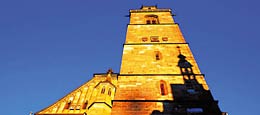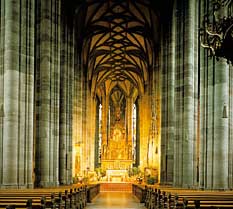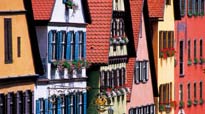|
|||||
 |
|||||
|
|
|
| Graben |
|
| Graefenberg |
|
 Impressum |
 |
||||||||||||||||||||||||||||||
|
||||||||||||||||||||||||||||||
|
|
|
| Local history of Dinkelsbuehl | |
| 8th century: A Franconian royal court in today’s Hoffeld region probably is the nucleus of the settlement. 10th century: Dinkelsbuehl receives a city wall with towers and gateways. First proved by documents as "burgus Tinkelspuhel” in the year 1188. 1251: Dinkelsbuehl was mortgaged to the city of Oettingen by King Konrad IV. But the citizens paid enormous sums to acquire their freedom – and succeeded. In 1546 Emperor Charles VI conquers the so-called "Schmalkaldischer Bund”. The city is ruled by a Catholic council now and St. George’s Minster is ceded to the Catholic minority. 1802: Dinkelsbuehl becomes Bavarian. 1804: Dinkelsbuehl becomes Prussian. 1806: Dinkelsbuehl becomes Bavarian again. |




